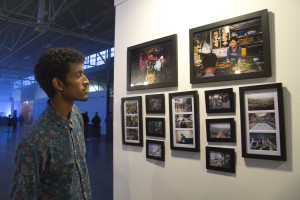Event photography is one of the best ways for a photographer to test their speed and ability as a photographer. With each moment coming and leaving sometimes in the blink of an eye, it is important that event photographers are ready and equipped to produce their best possible photographs at any given moment. This post will offer 5 tips for getting good event photography shots.
 Let us discover what could have helped when lighting this photo
Let us discover what could have helped when lighting this photo
1. External Flash – External flash is specified because of the range that the flash will illuminate. A built-in camera flash is bright, but will only illuminate a photograph to a certain distance. Bringing along an external flash will make a great difference as there usually is no place or time to set up free standing lights. Having a flash handy and ready to go will make your chances greater at becoming an event photographer known for producing good images.
2. Light Diffusers – Be sure to bring a light diffuser or soft light for your flash. As mentioned above using a flash is vital to have as an indoor photographer – with poor light sources provided. With your flash you’ll get the lighting that you need, but direct lighting, much like the sun, can provide a harsh light which casts heavy shadows. Using a light diffuser ensures that your subjects are well lit, while maintaining their original softness.
3. Bouncing the Flash – You never want to aim a flash directly at your subject, doing so will raise the chances for red-eye and over-exposure.
4. Natural Light – Assuming your clients aren’t vampires, natural light is your friend! Whether the event is indoors or outdoors, knowing the position of the sun or moon is important for an event photographer, or any photographer. People photograph best if they can be lit using the light of the earth. You can even use a reflector to distribute light evenly on the subject.
5. ISO – Unfortunately, there are those occasions where a flash is inappropriate to use at an indoor event. And with lower light comes a higher ISO – meaning out of focus, noisy (grainy) photos. In this case it would benefit you, the event photographer, to use cameras and lenses with good low-light settings. Using full frame cameras such as The Canon Mark III or the Nikon D4 will have wider sensors with larger pixels, enabling you to use a lower ISO.
Here are some additional links with more great event photography and general photography tips:
https://photographylife.com/low-light-digital-photography-tips
http://petapixel.com/2014/01/24/40-tips-take-better-photos/
http://www.smashingmagazine.com/2009/04/22/the-ultimate-photography-round-up/


